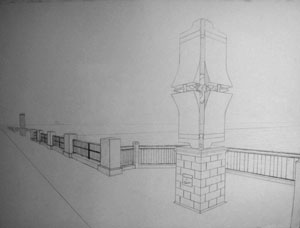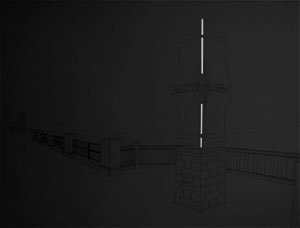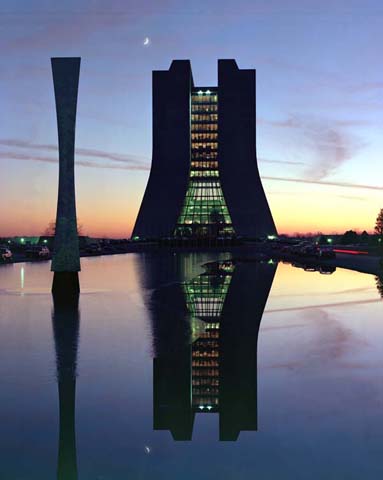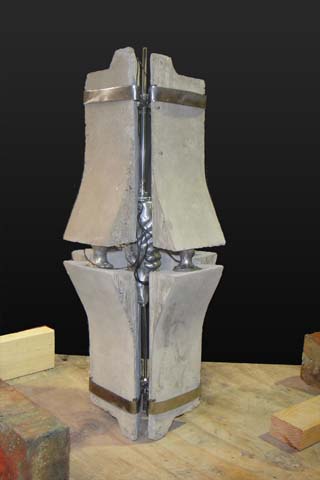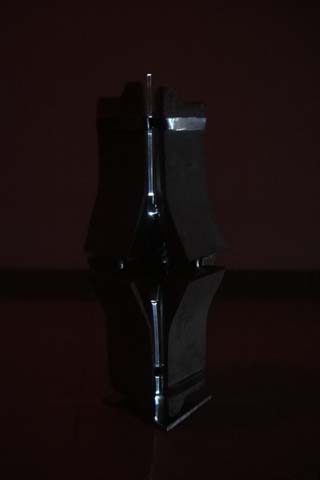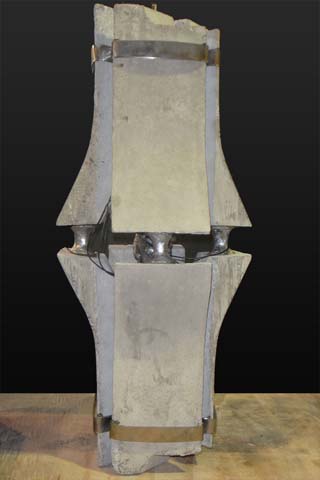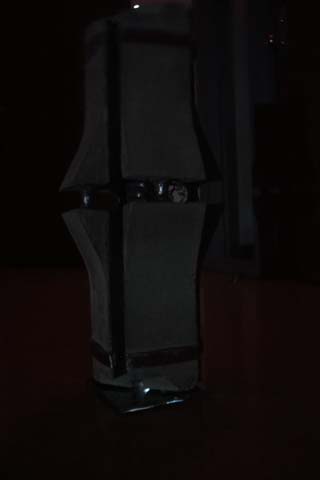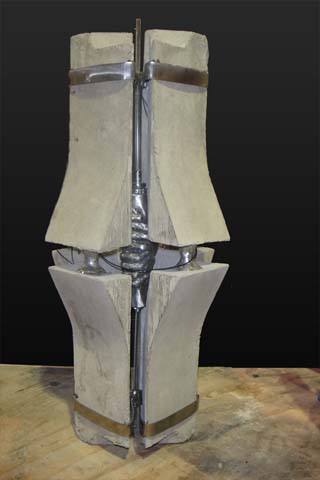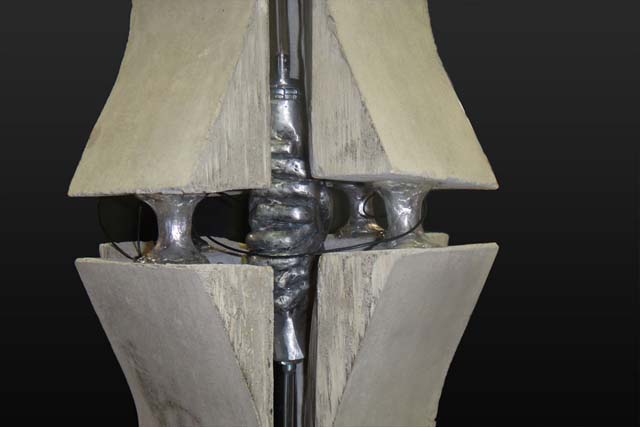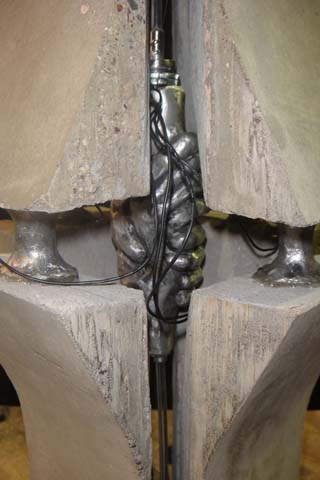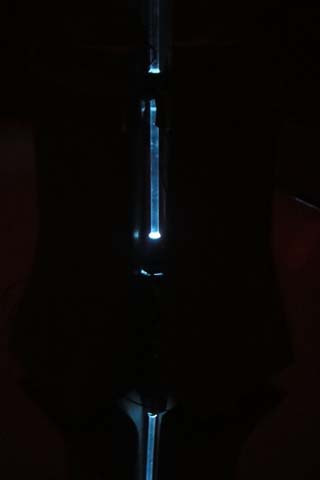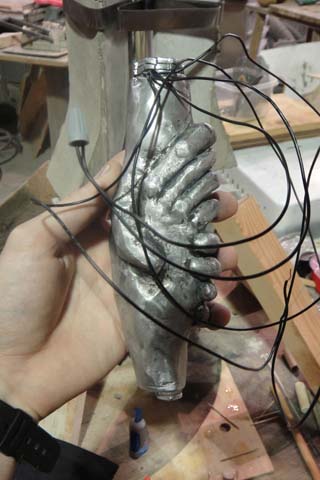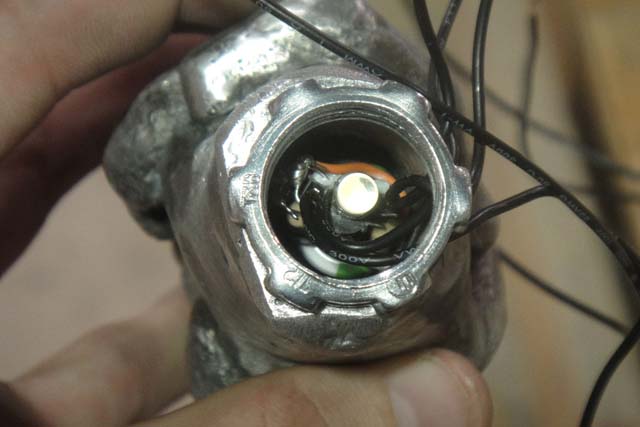The God Particle
by: Nicholas Trompeter
Semester: Spring 2013
Class: Intermediate Sculpture
This sculpture is representative of Fermilab and its importance in furthering the scientific community in the area of particle physics. It shows the importance of collaboration in the field of science and also the mysterious/unknown frontier that is being explored. Physically, the outer shell consists of eight concrete blocks that, when looked upon from two specific angles, match the silhouette of the facade of Fermilab's Wilson Hall. Since Wilson Hall has a reflecting pool in front of it, the facade gets reflected in the water. In the same way, the bottom of my piece is a reflection of the top.
There are also a number of hidden meanings behind both the elements of the sculpture, and the sculpture itself. The piece is mostly vertical explaining how science is always growing and trying to reach new heights. In addition, a majority of the elements are geometric showing the mechanical form that particle physics has adopted in its creation of equipment meant to contain the experiments.
An organic element comes through as a handshake cast out of aluminum that, again, establishes the collaborative element of science. Science is not accomplished by one person but by a group of people who pool their knowledge in search of answers to the unknown. Also, aluminum was chosen as the casting metal because of its importance as a widely recycled and reused metal in numerous projects and products.
The third major element of the sculpture is light. White LEDs powered by a pair of batteries and an electrical circuit, created within the handshake, shine light out of the center and through acrylic rods that travel out of the top and bottom of the handshake. First, the light and the acrylic rods are meant to represent the particles that travel through the collider at the lab. Second, because much scientific research is being done to establish more efficient and cleaner (greener) ways of powering an ever-increasing industrial world, the light only turns on when it is dark out, thus saving energy. It also allows the sculpture to be more dynamic to the viewers passing by at different times of the day. Lastly, if a larger piece were created, it would not only be battery powered but also solar powered so that it would not have to use an external power supply and would not require changing out used batteries
The wires shown around the center of the piece are both functional and representative. The photoresistors is connected to the ends of two of those wires to detect light and dark, but the wires are also a representation of the images the computers receive during collisions within the accelerator. Just like the particles at the lab explode in all different directions, these wires extend out from the center of the piece in similar chaotic patterns.
Also, if the model was to become full scale, there may be a concern about the weight of the concrete blocks. However, the piece would be redesigned to keep all outer aesthetics the same, while the inside of the blocks would be hollow. An inner framework would be used to keep the shape of the piece congruent, but drastically decrease its weight.
Photo of Fermilab's Wilson Hall found here.
Copyright © 2016 | Nick Trompeter | All Rights Reserved
